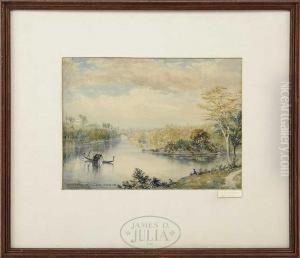Merrill G. Wheelock Paintings
Merrill G. Wheelock was an American architect born in 1822, in Concord, Vermont. He was known primarily for his work in the mid-19th century, which included designs for public buildings, churches, and private residences. Wheelock's architectural style reflected the popular trends of his time, including Greek Revival and Gothic Revival.
Wheelock began his architectural career in Boston, Massachusetts, where he worked under the tutelage of prominent architects like Richard Bond. This period was crucial for Wheelock's development as it allowed him to refine his design skills and gain a reputation in the field. Notably, he contributed to the design of the Massachusetts State House's extension, showcasing his ability to work on significant public projects.
In the early 1850s, Wheelock moved to Washington, D.C., where he became an influential architect. His works during this period include the design of the Calvary Baptist Church and the enlargement of the First Congregational Church of Washington. His contributions to ecclesiastical architecture are particularly noted for their blend of aesthetic appeal and functional design.
Unfortunately, Merrill G. Wheelock's career was cut short by his premature death in 1866. Despite his relatively brief career, Wheelock left a lasting impact on the architectural landscape of his time. His work is a testament to the rich architectural history of the United States during a period of significant growth and change.
